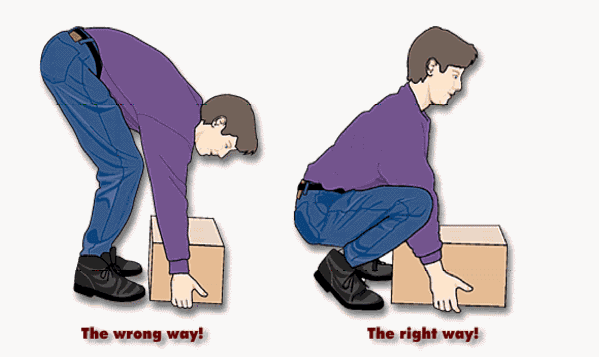Environmental Health 110.
Work Site Hazards
The likelihood of being exposed to hazards of any work site is very likely. Working is a daily basis activity and it is apparent that it will increase the probability of illness, injury, disability, and even death. We simply can't avoid to not work just to prevent injuries and deaths. We don't have to fear. We just have to be more aware.
Potential hazards include air contaminants, exposure to chemicals, microorganisms, radiation, ergonomic hazards, toxins, and hazardous materials. Work-sites that are outdoors, may expose you to physical hazards such as heavy equipment, motor vehicles, and heat.

Hazards That Cause Injury And Illnesses

Chemical Hazards
-They are corrosive and can harm respiratory organs, eyes, and skin.
-Chemicals can be inhaled, absorbed, ingested, or injected.
-When working with chemicals, you should know exactly what substance you are using and what to do if there is an emergency.
-Never remove warning labels.
-If there is a spill or accident, go to the nearest shower facility to rinse of chemicals on your body.
-Always wear protective equipment when working with hazardous chemicals.

Physical Hazards
-Include temperature, light, noise, vibration, and radiation exposure.
-Being in a comfortable temperature is ideal in preventing heat exhaustion.
-Install fans and air conditioning to reduce air temperature.
-Noise can be controlled by installing quieter equipment, mufflers, silencers, or baffles.
-Wear protective ear shielding equipment.
-Exposure to radiation can be controlled by reducing exposure time, increasing distance, and wearing protective shielding.
-Drive motor vehicles with caution

Air Contaminants
-Work process that produces dust and is inhaled or ingested is considered to be hazardous.
-It is classified as a particulate matter or gas/vapor.
-Most common particulate contaminates include dust, fibers, mists, and aerosols.
-Lungs are easily affected and can cause respiratory injuries.
-Occupational lung disease is the number 1 work-related illness in the United States
-Approximately 18,000 lung cancer deaths per year are due to inhalation of carcinogens in the workplace.

Biological Hazards
-Include pathogens and other living organisms that can cause acute or chronic infections.
-Ways pathogens enter the body is through a break in the skin, through mucous membrane passageways, through intake of contaminated food, contact with sick workers/customers, or contaminated objects.
-Professionals that are more prone to being exposed to biological hazards are laboratory workers and medical professionals.
-Practice hand-washing regularly.
-Get mandatory immunizations.
-Make sure you dispose contaminated materials properly.
-And always wear protective clothing.

Ergonomic Hazards
-Include excessive vibration, noise, eye strain, repetitive motion, and lifting heavy things.
-Poorly designed work areas, improper equipment, poorly designed tasks, and demands for speed in performing a task may increase exposure to the hazard.
-Most common ergonomic injury is lower back pain and carpal tunnel syndrome.
-Workers doing heavy lifting can reduce risk by using special equipment, taking mandatory breaks, or changing the tasks.
-Desk workers should adjust chairs, change the lighting, and adjust computer monitors to reduce upper and lower back strain.